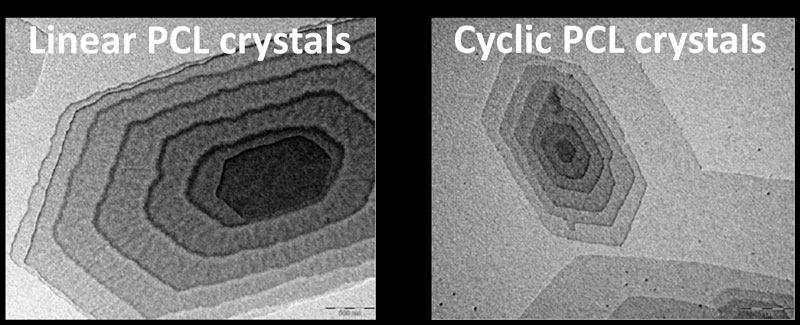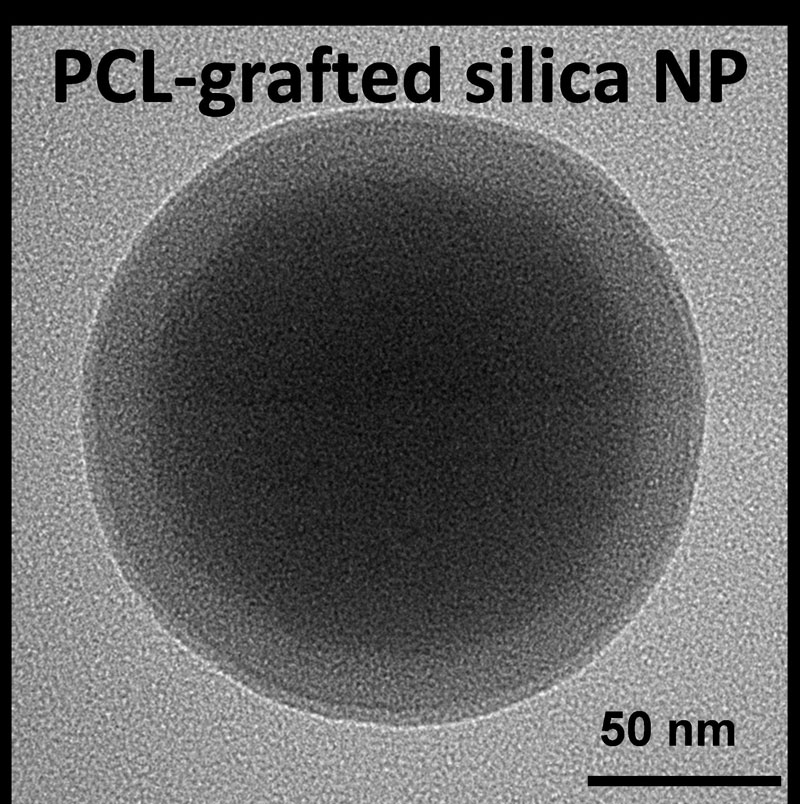The research in the Grayson group covers a range of fields, from fundamental exploration of polymer architecture, to investigations of their medical or materials applications:
Fundamental Studies of Molecular Architecture

Our research group has developed new synthetic techniques for making high purity cyclic polymers, and have investigated the unique physical properties of these polymers, with respect to exact linear analogs. These physical studies have largely been carried out through collaboration and have included investigations of degradation, crystallization, size in solution, gas phase conformations, etc.
This project is funded by the National Science Foundation
Transdermal Delivery

Amphiphilic nanoparticles offer a carrier that might enable the efficient transport of compounds through the stratum corneum of the skin. We are presently developing a modular approach to building amphiphilic macromolecule with control over size, shape, and surface properties in order to probe the utility of this approach for transdermal delivery of small molecular drugs, and transcutaneous delivery of antigens for vaccination.
This project is funded by the National Institute of Health, and the Louisiana Board of Regents.
Gene Transfection

Poly(ethylene imine) (PEI) is a cationic polymer that exhibits an inherent ability to bind to DNA and aid in its transfection into cells, trafficking into a cell’s nucleus, and ultimately its expression. Many aspects of this complicated escorting process remain poorly understood. In an attempt to elucidate the mechanisms involved, a modular library of well-defined PEI polymers are being prepared to elucidate the effect of architecture on gene transfection
This project is funded by Tulane University.
Cancer Therapy/Tumor Targeting
Recent studies have verified that the molecular weight and architecture of polymers can have a profound effect on their enhanced targeting to tumor tissue via the Enhanced Permiability and Retention (EPR) effect. With our development of efficient synthetic routes to complex molecular architectures, we plan on exploring in further detail the effect of molecular architecture on biodistribution and tumor targeting.
This project is funded by Tulane University.
Hydrocarbon Remediation

Amphiphilic nanoparticles with a covalently linked micelle-like architecture offer the unique ability to solvate non-polar hosts in water, regardless of their concentration, because their micellar structure is not dependent upon a reversible assembly process. They therefore offer tremendous promise for the remediation of non-polar pollutants in open environments where rapid dilution complicates the use of traditional dispersants. Our group is presently investigating the feasibility of both nanoparticle-based, and polymer-based micelles.
This project is funded by the Gulf of Mexico Research Initiative and the National Science Foundation
